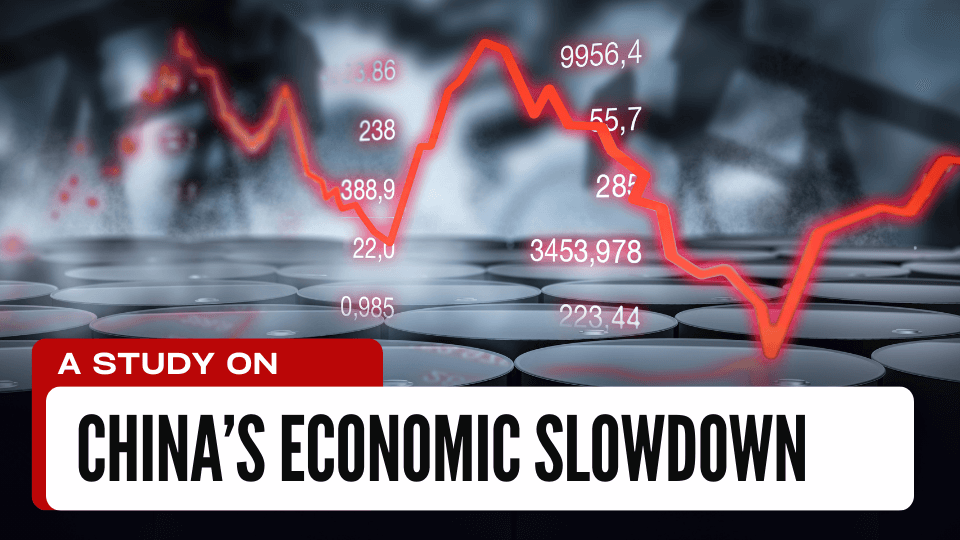How Novo Nordisk Lost Ground In The Weight-Loss Market With Ozempic

Table of Contents
Increased Competition from Rival GLP-1 Receptor Agonists
The weight-loss market, once largely dominated by Ozempic, has become increasingly competitive. The emergence of rival GLP-1 receptor agonists has significantly impacted Novo Nordisk's market share.
The Rise of Semaglutide Competitors
The most significant challenge comes from Eli Lilly's Mounjaro (tirzepatide). Clinical trials have demonstrated Mounjaro's superior weight loss results compared to Ozempic (semaglutide). This superior efficacy has attracted a large number of patients and physicians, significantly eroding Ozempic's market share.
- Mounjaro's efficacy: Clinical trials showed Mounjaro leading to significantly greater weight loss compared to Ozempic, attracting patients seeking the most effective treatment.
- Mounjaro's pricing: While Mounjaro's pricing is also high, its perceived value proposition based on superior efficacy has made it a compelling alternative for many.
- Novo Nordisk's response to Mounjaro's success: Novo Nordisk has responded by highlighting Ozempic's established safety profile and wider availability, but the superior efficacy of Mounjaro remains a significant hurdle.
- Market analysis comparing Mounjaro and Ozempic: Market research consistently shows a shift in preference toward Mounjaro, fueled by its demonstrably better weight loss outcomes.
Expanding the GLP-1 Receptor Agonist Market
The overall GLP-1 receptor agonist market is expanding rapidly, driven by the growing prevalence of obesity and the increasing demand for effective weight-loss treatments. However, this growth hasn't translated into proportional gains for Novo Nordisk.
- Growth projections for the weight-loss market: Analysts predict continued substantial growth in the market, but Novo Nordisk's share of this expansion is smaller than anticipated.
- New entrants in the market: Further competition is expected as other pharmaceutical companies develop and launch their own GLP-1 receptor agonists and other weight-loss medications.
- Impact of generic competition (future outlook): The eventual arrival of generic competitors could further pressure Novo Nordisk's margins and market share.
Challenges Related to Supply and Demand
Beyond competition, Novo Nordisk has faced significant challenges related to supply and demand, further hindering its ability to maintain market leadership.
Ozempic Shortages and Production Bottlenecks
Significant shortages of both Ozempic and Wegovy (another Novo Nordisk semaglutide-based medication) have plagued the market. This has negatively impacted patient access, damaged brand perception, and contributed to market share loss.
- Reasons for shortages (increased demand, production capacity limitations): The unexpected surge in demand, coupled with limitations in production capacity, led to significant supply constraints.
- Impact on patient access and satisfaction: Shortages resulted in frustrated patients, leading to some switching to alternative treatments or abandoning their weight-loss goals altogether.
- Novo Nordisk's response to address shortages: Novo Nordisk has invested in expanding production capacity, but resolving the shortages has proven a protracted process.
Pricing Strategies and Accessibility
The high price of Ozempic has been a significant barrier to access for many patients. This affordability issue, coupled with the competitive landscape, has impacted Novo Nordisk's overall market penetration.
- Comparison of Ozempic and competitor pricing: While competitor pricing is also high, the perception of value against efficacy has shifted preference towards rivals in some cases.
- Impact of insurance coverage: Insurance coverage varies significantly, impacting affordability and accessibility for different patient groups.
- The role of affordability in market share: The high cost of Ozempic has undoubtedly limited its reach and contributed to the adoption of potentially more affordable alternatives, even if less effective.
Marketing and Public Perception
Novo Nordisk's marketing strategies and the public perception of Ozempic have also played a role in its loss of market dominance.
Managing Negative Publicity and Side Effects
Negative publicity surrounding Ozempic's side effects, while not unique to the drug, has impacted patient trust and market share.
- Common side effects of Ozempic: Nausea, vomiting, diarrhea, and constipation are common side effects that have been widely reported.
- Media coverage of side effects: Media attention to these side effects has raised concerns amongst potential patients, impacting the overall perception of Ozempic.
- Novo Nordisk's communication strategies to address concerns: Novo Nordisk has attempted to address these concerns through educational campaigns, but negative publicity has persisted.
Marketing Strategies and Brand Positioning
Compared to competitors, Novo Nordisk's marketing strategies may have been less effective in capitalizing on the burgeoning weight-loss market.
- Comparative analysis of marketing campaigns: Competitors have perhaps been more successful in highlighting the benefits of their drugs, while also addressing safety concerns more effectively.
- Effectiveness of direct-to-consumer advertising: The effectiveness of DTC advertising varies and could have played a role in the shifts in market share.
- Impact of social media and influencer marketing: Social media and influencer marketing have played a significant role in shaping public perception, and Novo Nordisk might have missed opportunities to leverage these platforms effectively.
Conclusion
Novo Nordisk's loss of ground in the weight-loss market with Ozempic is a complex issue stemming from increased competition, particularly from Mounjaro's superior efficacy; supply chain issues resulting in shortages; high pricing impacting accessibility; and managing negative publicity surrounding side effects. While Ozempic remains a significant player, the weight-loss market is dynamic and fiercely competitive. Understanding the challenges Novo Nordisk faces and the strategic maneuvers of its competitors is crucial for anyone interested in this rapidly evolving sector. Further research into the long-term effects of GLP-1 receptor agonists and the ever-changing competitive landscape is essential for both patients and pharmaceutical companies operating within the obesity treatment market. The future of Ozempic and similar GLP-1 receptor agonists will depend on adaptation and innovation in the face of intense competition.

Featured Posts
-
 The Monte Carlo Final How Musettis Injury Affected Alcarazs Campaign
May 30, 2025
The Monte Carlo Final How Musettis Injury Affected Alcarazs Campaign
May 30, 2025 -
 Chinas Economic Slowdown How It Affects Nvidias Growth Projections
May 30, 2025
Chinas Economic Slowdown How It Affects Nvidias Growth Projections
May 30, 2025 -
 California Coast Suffers The Impact Of Toxic Algae Blooms On Marine Ecosystems
May 30, 2025
California Coast Suffers The Impact Of Toxic Algae Blooms On Marine Ecosystems
May 30, 2025 -
 Programma Tileoptikon Metadoseon Kyriakis 16 Martioy
May 30, 2025
Programma Tileoptikon Metadoseon Kyriakis 16 Martioy
May 30, 2025 -
 Ticketmaster Issues Urgent Warning About Fake Ticket Sellers
May 30, 2025
Ticketmaster Issues Urgent Warning About Fake Ticket Sellers
May 30, 2025
